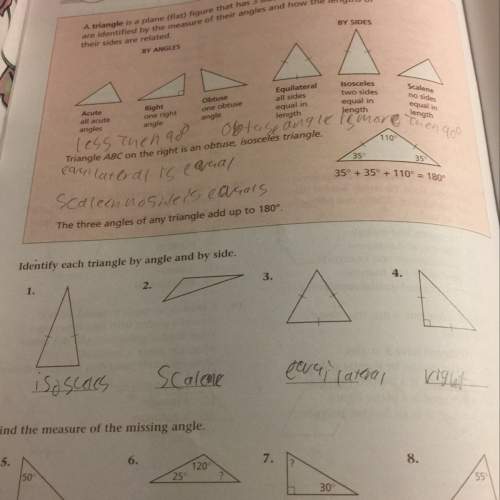Which statement about proportional relationships is false?
.
A proportional relationship m...

Mathematics, 08.04.2020 20:11 Serenitybella
Which statement about proportional relationships is false?
.
A proportional relationship must graph as a line.
A graph of a proportional relationship must pass through (0, 0).
Each point (or pair) in a proportional relationship must share the same ratio.
Each point (or pair) in a proportional relationship must share the same difference.

Answers: 1
Another question on Mathematics

Mathematics, 21.06.2019 16:30
In the figure shown below, m < 40 and ab =8. which equation could be used to find x?
Answers: 2

Mathematics, 21.06.2019 19:10
Girardo is using the model below to solve the equation . girardo uses the following steps: step 1 add 4 negative x-tiles to both sides step 2 add 1 negative unit tile to both sides step 3 the solution is which step could be adjusted so that gerardo's final step results in a positive x-value? in step 1, he should have added 4 positive x-tiles to both sides. in step 1, he should have added 3 negative x-tiles to both sides. in step 2, he should have added 4 negative unit tiles to both sides. in step 2, he should have added 1 positive unit tile to both sides.
Answers: 2

Mathematics, 21.06.2019 19:50
Examine the two-step equation. − 7 4 + x 4 = 2 which property of operations allows you to add the same constant term to both sides? amultiplication property of equality bdivision property of equality caddition property of equality dsubtraction property of equality
Answers: 2

Mathematics, 21.06.2019 21:40
Write the contrapositive of the conditional statement. determine whether the contrapositive is true or false. if it is false, find a counterexample. a converse statement is formed by exchanging the hypothesis and conclusion of the conditional. a) a non-converse statement is not formed by exchanging the hypothesis and conclusion of the conditional. true b) a statement not formed by exchanging the hypothesis and conclusion of the conditional is a converse statement. false; an inverse statement is not formed by exchanging the hypothesis and conclusion of the conditional. c) a non-converse statement is formed by exchanging the hypothesis and conclusion of the conditional. false; an inverse statement is formed by negating both the hypothesis and conclusion of the conditional. d) a statement not formed by exchanging the hypothesis and conclusion of the conditional is not a converse statement. true
Answers: 1
You know the right answer?
Questions

English, 05.09.2020 19:01



Mathematics, 05.09.2020 19:01







English, 05.09.2020 19:01






Mathematics, 05.09.2020 19:01

Social Studies, 05.09.2020 19:01





